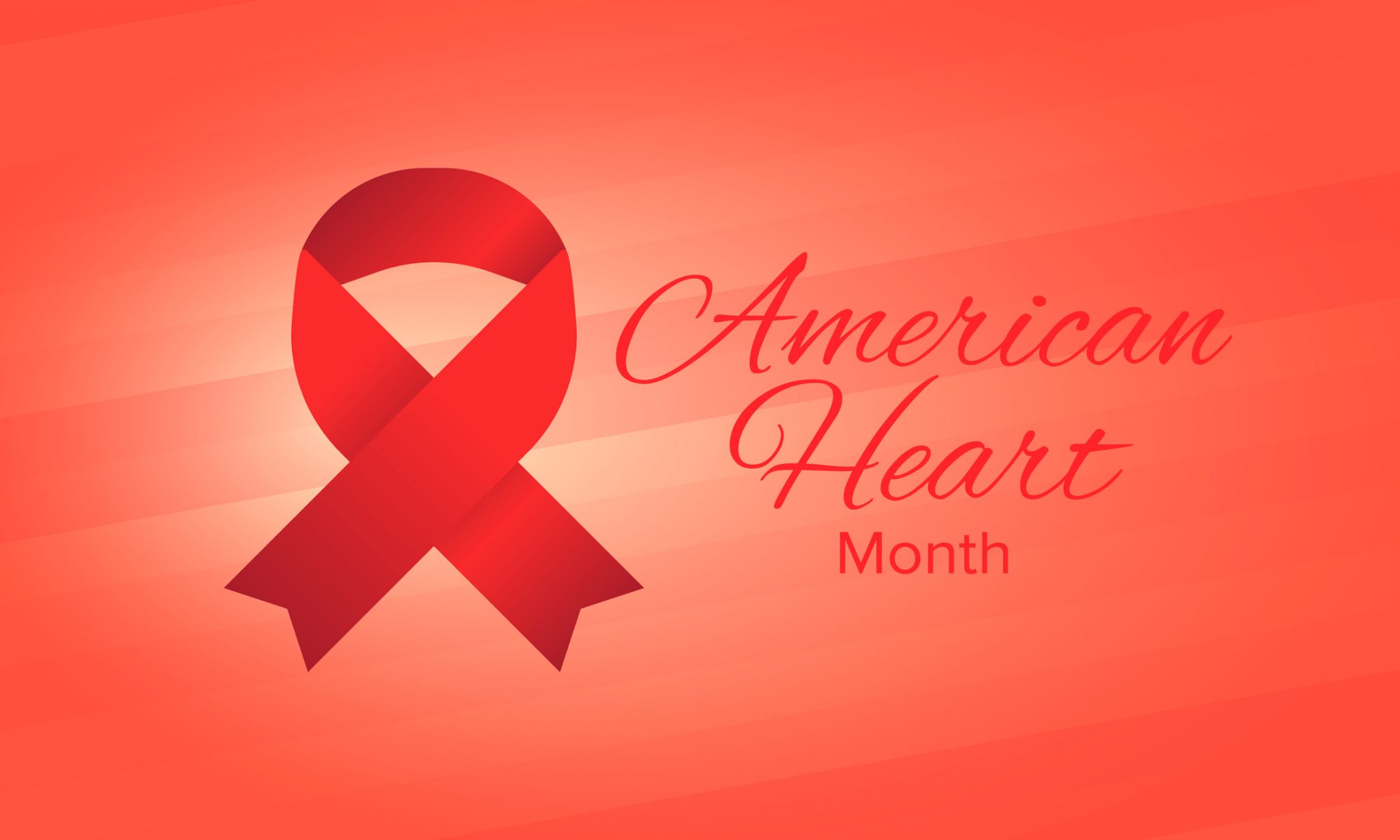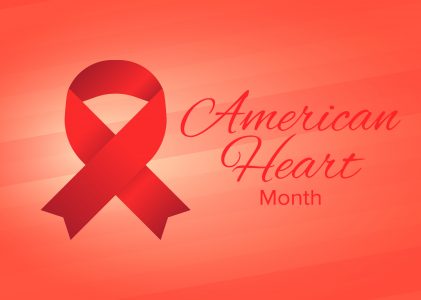Table of Contents
- 1 The 2025 American Heart Month Initiative
- 2 Understanding Heart Disease
- 3 Who is at Risk of Heart Disease?
- 4 Risk Factors for Heart Disease
- 5 Understanding the Link Between Diabetes & Heart Disease
- 6 How Genetics Play a Role in Heart Disease
- 7 Preventing Heart Disease
- 8 Recognizing the Symptoms of a Heart Attack
- 9 Recognizing the Symptoms of a Stroke
- 10 Warning Signs of Heart Disease
- 11 2025 American Heart Month Initiatives
- 12 Cardiac MRI
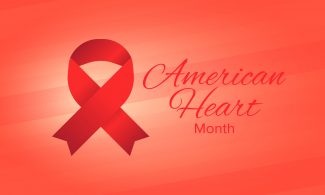
February is American Heart Month, a national health initiative dedicated to raising awareness about heart disease and the importance of cardiovascular health. Heart disease remains the leading cause of death in the United States, responsible for nearly 1 in 5 deaths annually. Despite medical advancements, it continues to impact millions of lives, making education and prevention critical.
While heart disease affects people across all demographics, certain communities face a higher burden due to disparities in healthcare access, socioeconomic status, and lifestyle factors. Black, Hispanic, and Indigenous populations often experience higher rates of high blood pressure, diabetes, and obesity, which contribute to an increased risk of cardiovascular disease. Ensuring equitable access to education, screenings, and healthcare services is essential in reducing these disparities.
The National Heart, Lung, and Blood Institute (NHLBI) leads efforts to provide reliable resources and community initiatives that promote heart health awareness and disease prevention.
The 2025 American Heart Month Initiative
The 2025 American Heart Month campaign focuses on community engagement and promoting small, sustainable lifes
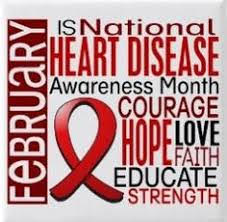
tyle changes that can have a long-term positive impact on heart health. This year’s initiatives encourage:
- Increasing awareness of modifiable risk factors for heart disease.
- Encouraging individuals to take control of their heart health through diet, exercise, and routine screenings.
- Expanding community-based programs to ensure accessible heart health education and healthcare services.
- Promoting the Heart Truth® Campaign, a program from NHLBI that educates individuals about the risk of heart disease and encourages preventive measures.
This year, individuals are encouraged to participate in local events, share educational materials, and commit to heart-healthy habits.
Understanding Heart Disease
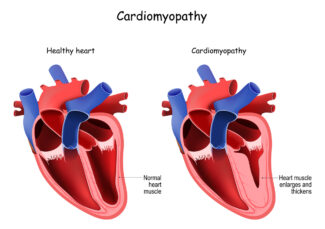
Heart disease encompasses various conditions that affect the heart’s function and circulation. The most common type, coronary heart disease (CHD), occurs when plaque builds up in the arteries, restricting blood flow and increasing the risk of heart attacks. Other forms of heart disease include:
- Coronary Heart Disease (CHD): Plaque buildup in the arteries narrows blood vessels, leading to chest pain (angina) or heart attacks.
- Heart Failure: The heart is unable to pump blood efficiently, resulting in fatigue, shortness of breath, and fluid buildup in the lungs and extremities.
- Arrhythmias: Irregular heartbeats that can disrupt normal circulation, leading to dizziness, fainting, or increased stroke risk.
- Heart Valve Disease: Malfunctioning heart valves that fail to open or close properly, affecting blood flow and increasing strain on the heart.
To learn more about different heart conditions and their impact on health, visit the NHLBI’s Heart Disease Resources.
Who is at Risk of Heart Disease?
Heart disease affects millions of people, but some groups face higher risks due to various health and lifestyle factors.
- Prevalence: Nearly 1 in 5 deaths in the U.S. is due to heart disease.
- Higher-Risk Populations:
- Black, Hispanic, and Indigenous individuals face disproportionate risks due to increased rates of high blood pressure, diabetes, and obesity.
- Women often experience atypical heart attack symptoms, leading to delayed diagnoses and treatment.
- Age and Family History: Individuals over age 45 or with a family history of heart disease are at higher risk.
- Lifestyle and Health Conditions: Smoking, poor diet, lack of exercise, and unmanaged medical conditions like diabetes and high blood pressure significantly increase the risk of heart disease.
Recognizing risk factors is the first step in prevention. Through education, lifestyle modifications, and regular screenings, individuals can take proactive steps to lower their risk and protect their heart health.
Risk Factors for Heart Disease
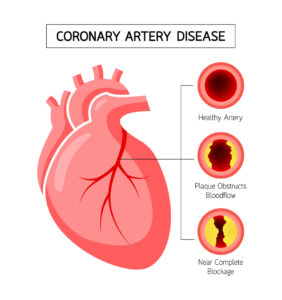
Heart disease develops due to a combination of genetic, lifestyle, and medical factors. While some risk factors—like family history—are beyond our control, many modifiable lifestyle choices can greatly impact heart health. Recognizing and managing these risks is essential for prevention.
Several conditions and behaviors increase the likelihood of developing heart disease:
- High Blood Pressure (Hypertension) – Elevated blood pressure forces the heart to work harder, increasing the risk of heart attack and stroke.
- High Cholesterol – Excess cholesterol can lead to plaque buildup in the arteries, restricting blood flow and raising the risk of coronary heart disease.
- Smoking and Tobacco Use – Nicotine and chemicals in tobacco damage blood vessels, increase blood pressure, and decrease oxygen levels in the blood.
- Diabetes – High blood sugar levels can damage arteries and nerves that control the heart.
- Obesity – Excess body weight contributes to high blood pressure, diabetes, and cholesterol imbalances, all of which raise heart disease risk.
- Physical Inactivity – A sedentary lifestyle weakens the heart, slows metabolism, and increases fat accumulation in the bloodstream.
- Unhealthy Diet – A diet high in sodium, saturated fats, trans fats, and added sugars can lead to hypertension, obesity, and high cholesterol.
- Excessive Alcohol Consumption – Drinking too much alcohol raises blood pressure and increases triglyceride levels, which can lead to heart disease.
- Chronic Stress & Mental Health Factors – Long-term stress can elevate blood pressure and contribute to unhealthy behaviors, such as overeating or smoking.
Addressing modifiable risk factors through diet, exercise, and routine medical care can dramatically lower the likelihood of developing cardiovascular disease.
Understanding the Link Between Diabetes & Heart Disease
There is a strong connection between diabetes and heart disease. People with Type 2 diabetes are twice as likely to develop cardiovascular disease compared to those without diabetes. This is because high blood sugar levels:
- Damage blood vessels and nerves that regulate heart function.
- Increase inflammation, contributing to plaque buildup in the arteries (atherosclerosis).
- Raise blood pressure and cholesterol levels, increasing the risk of stroke and heart attacks.
Managing blood sugar, blood pressure, and cholesterol levels is critical for reducing cardiovascular risks in individuals with diabetes. Learn more about Diabetes and Your Heart Disease from the Centers for Disease Control and Prevention, CDC.
How Genetics Play a Role in Heart Disease
While lifestyle choices significantly impact heart health, genetics also play a role in determining an individual’s risk for cardiovascular disease. If a parent or sibling has heart disease, there is a higher chance of developing it as well.
However, genetics alone does not determine heart health. Many people with a family history of heart disease can reduce their risk by:
- Maintaining a healthy diet
- Exercising regularly
- Managing blood pressure and cholesterol
- Avoiding smoking and excessive alcohol use
Genetic predisposition combined with modifiable risk factors shapes overall cardiovascular health. By making heart-healthy lifestyle choices, individuals can lower their risk, even with a family history of heart disease.
Preventing Heart Disease
Heart disease is largely preventable through healthy lifestyle choices and regular medical check-ups. Making small, consistent changes in daily habits can significantly reduce the risk of developing cardiovascular disease.
Heart-Healthy Lifestyle Choices
Regular Physical Activity
Engaging in consistent exercise strengthens the heart, improves circulation, and helps regulate blood pressure and cholesterol.
- Aim for at least 150 minutes of moderate-intensity exercise per week.
- Activities such as brisk walking, swimming, cycling, and strength training support cardiovascular health.
- Even simple changes—like taking the stairs instead of the elevator or walking during breaks—can make a difference.
Heart-Healthy Diet
Eating nutritious foods plays a major role in reducing heart disease risk. A balanced diet helps lower cholesterol, regulate blood pressure, and maintain a healthy weight.
- Reduce sodium, saturated fats, trans fats, and added sugars to prevent plaque buildup in the arteries.
- Increase consumption of:
- Fruits & Vegetables – Packed with antioxidants, fiber, and vitamins that promote heart health.
- Whole Grains – Help reduce cholesterol and improve digestion.
- Lean Proteins – Fish, poultry, beans, and nuts provide essential nutrients without unhealthy fats.
- Healthy Fats – Found in olive oil, avocados, nuts, and seeds, these support good cholesterol (HDL) levels.
Quit Smoking & Limit Alcohol Consumption
Smoking is a major risk factor for heart disease, damaging blood vessels and increasing blood pressure.
- Quitting smoking can dramatically reduce heart disease risk within just a few years.
- Free resources are available to help quit smoking: Smokefree.gov.
Excessive alcohol consumption raises blood pressure and can contribute to weight gain and other heart-related issues. Limiting alcohol intake to moderate levels (1 drink per day for women, 2 for men) is recommended.
Managing Stress & Mental Health
Chronic stress contributes to high blood pressure, unhealthy eating habits, and sleep disturbances, all of which negatively impact heart health.
- Practicing mindfulness, deep breathing exercises, meditation, and yoga can help reduce stress levels.
- Staying socially connected and engaging in enjoyable activities also supports emotional well-being.
Regular Screenings & Doctor Visits
Routine medical screenings help detect potential heart disease risks early, allowing for timely intervention.
- Blood Pressure Monitoring
- High blood pressure (hypertension) is often called the “silent killer” because it has no noticeable symptoms.
- Regular blood pressure checks help detect hypertension before it leads to complications like heart attack or stroke.
- Cholesterol Testing
- Elevated cholesterol levels contribute to plaque buildup in arteries, increasing the risk of heart disease and stroke.
- A simple blood test can measure cholesterol levels and help guide dietary and lifestyle modifications.
- Blood Sugar Checks
- Diabetes significantly increases the risk of heart disease.
- Regular A1C and fasting glucose tests can help detect pre-diabetes or diabetes early, allowing for better management.
Making heart health a priority through regular screenings, lifestyle changes, and preventive care can dramatically reduce the risk of cardiovascular disease and improve overall well-being. Cardiac MRI is a valuable tool for early detection, treatment planning, and monitoring of heart diseases.
Recognizing the Symptoms of a Heart Attack
Heart attacks occur when blood flow to the heart is blocked, depriving the heart muscle of oxygen. Recognizing the warning signs and seeking immediate medical attention can be lifesaving.
Common Symptoms in Men & Women
While chest pain is the most well-known symptom, heart attack symptoms can vary between individuals, particularly between men and women.
Key Warning Signs of a Heart Attack
- Chest Pain or Discomfort – Pressure, tightness, or a squeezing sensation in the center or left side of the chest. This may last for more than a few minutes or come and go.
- Shortness of Breath – May occur before, during, or after chest discomfort and can happen even when resting.
- Pain in the Upper Body – Discomfort may radiate to the arms, back, shoulders, jaw, or stomach.
- Cold Sweats, Nausea, or Lightheadedness – More common in women, and often mistaken for anxiety or indigestion.
Learn more about the Signs of a Heart Attack.
Differences in Heart Attack Symptoms Between Men & Women
- Men are more likely to experience classic symptoms such as intense chest pain and arm discomfort.
- Women may have less obvious symptoms, including:
- Unusual fatigue
- Nausea or vomiting
- Pain in the back, neck, or jaw
- Dizziness or fainting
Because women’s symptoms can be more subtle, they may delay seeking medical help, increasing their risk of complications. It’s critical to recognize the signs and call 911 immediately if a heart attack is suspected.
Recognizing the Symptoms of a Stroke
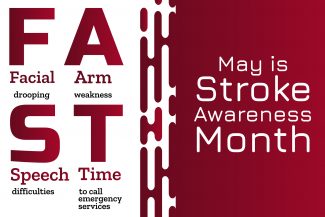 A stroke occurs when blood supply to the brain is interrupted, depriving brain cells of oxygen. Immediate treatment can reduce brain damage and improve survival rates.
A stroke occurs when blood supply to the brain is interrupted, depriving brain cells of oxygen. Immediate treatment can reduce brain damage and improve survival rates.
Use the FAST Test to Identify a Stroke:
- F – Face Drooping: Does one side of the face droop or feel numb? Ask the person to smile—an uneven smile is a warning sign.
- A – Arm Weakness: Is one arm weak or numb? Ask the person to raise both arms—if one drifts downward, it could be a stroke.
- S – Speech Difficulty: Is speech slurred, slow, or difficult to understand? Ask the person to repeat a simple sentence.
- T – Time to Call 911: If someone shows any of these signs, seek emergency help immediately. Every second counts!
Other stroke symptoms may include:
- Sudden confusion or difficulty understanding speech
- Blurred or lost vision in one or both eyes
- Dizziness or loss of balance
- Severe headache with no known cause
Heart attacks and strokes are medical emergencies—knowing the warning signs and acting quickly can save a life. If you or someone you know experiences symptoms, call 911 immediately.
Warning Signs of Heart Disease
Heart disease often develops silently, with early warning signs appearing before a major event like a heart attack or stroke. Recognizing these signs can help with early intervention and prevention of severe complications.
Beyond Heart Attacks – Early Signs of Cardiovascular Disease
- Fatigue or Unexplained Weakness – Persistent tiredness or lack of energy may indicate poor circulation or heart function.
- Swelling in the Legs, Ankles, or Feet (Edema) – Fluid retention can be a sign of heart failure, as the heart struggles to pump blood effectively.
- Dizziness or Fainting – Reduced blood flow to the brain due to heart irregularities or low blood pressure may cause sudden dizziness or fainting episodes.
- Irregular Heartbeats (Arrhythmias) – A fluttering, racing, or slow heartbeat could signal an issue with the heart’s electrical system.
- Persistent Coughing or Wheezing – A chronic cough, particularly one that produces pink or white mucus, may indicate fluid buildup in the lungs due to heart failure.
- Difficulty Breathing or Shortness of Breath – Breathlessness during normal activities, while resting, or when lying down can be a symptom of heart disease or congestive heart failure.
Ignoring these warning signs can lead to more severe complications, making early medical intervention crucial.
If you or someone you know experiences chest pain, severe shortness of breath, sudden weakness, or unexplained dizziness, seek emergency care immediately. These symptoms may indicate a heart attack, stroke, or another critical cardiovascular event.
2025 American Heart Month Initiatives
The Heart Truth® Campaign, led by the National Heart, Lung, and Blood Institute (NHLBI), focuses on:
- Raising awareness about preventing heart disease through education.
- Providing community resources to help individuals adopt heart-healthy habits.
- Encouraging regular screenings and doctor visits to detect heart disease early.
The campaign promotes the idea that small, consistent lifestyle changes can lead to long-term heart health benefits. To learn more, visit the Heart Truth Campaign.
Community Involvement & Social Media Awareness
- Use #OurHearts on social media to share heart health tips and inspire others to make positive changes.
- Participate in local heart health events, fundraisers, and free screening programs offered in your community.
- Encourage friends and family to schedule their routine health check-ups.
Taking Action for a Healthier Heart
Heart disease is largely preventable. By making small, sustainable lifestyle changes, individuals can significantly lower their risk and improve overall heart health.
- Commit to regular check-ups to monitor blood pressure, cholesterol, and heart function.
- Adopt heart-healthy habits, such as eating a nutritious diet, exercising, and managing stress.
- Raise awareness by sharing information and encouraging loved ones to prioritize their heart health.
For more information on heart disease prevention, warning signs, and treatment, visit NHLBI: American Heart Month. By understanding the risks, symptoms, and prevention strategies, we can work together to reduce the impact of heart disease and promote a healthier future.
Cardiac MRI
Cardiac MRI is a powerful, non-invasive imaging tool that provides detailed, high-resolution images of the heart and surrounding structures. This advanced technology helps physicians evaluate heart function, blood flow, and structural abnormalities, making it essential for diagnosing conditions such as coronary artery disease, heart failure, cardiomyopathies, and congenital heart defects.
Unlike other imaging methods, cardiac MRI does not use ionizing radiation, ensuring a safe and accurate assessment of the heart’s anatomy and function. It is particularly valuable for detecting myocardial scarring, inflammation, and blood flow issues, offering critical insights for treatment planning and ongoing disease monitoring. Learn more about the benefits of cardiac MRI at Greater Waterbury Imaging Center and how it supports early detection and precise diagnosis by visiting our Cardiac MRI page.
Greater Waterbury Imaging Center provides MR diagnostic imaging services to support early detection and prevention of heart disease. Our state-of-the-art MRI and cardiac MRI technology helps physicians diagnose cardiovascular conditions with precision and accuracy. Contact us today to schedule your imaging exam and take a proactive step toward better heart health.

